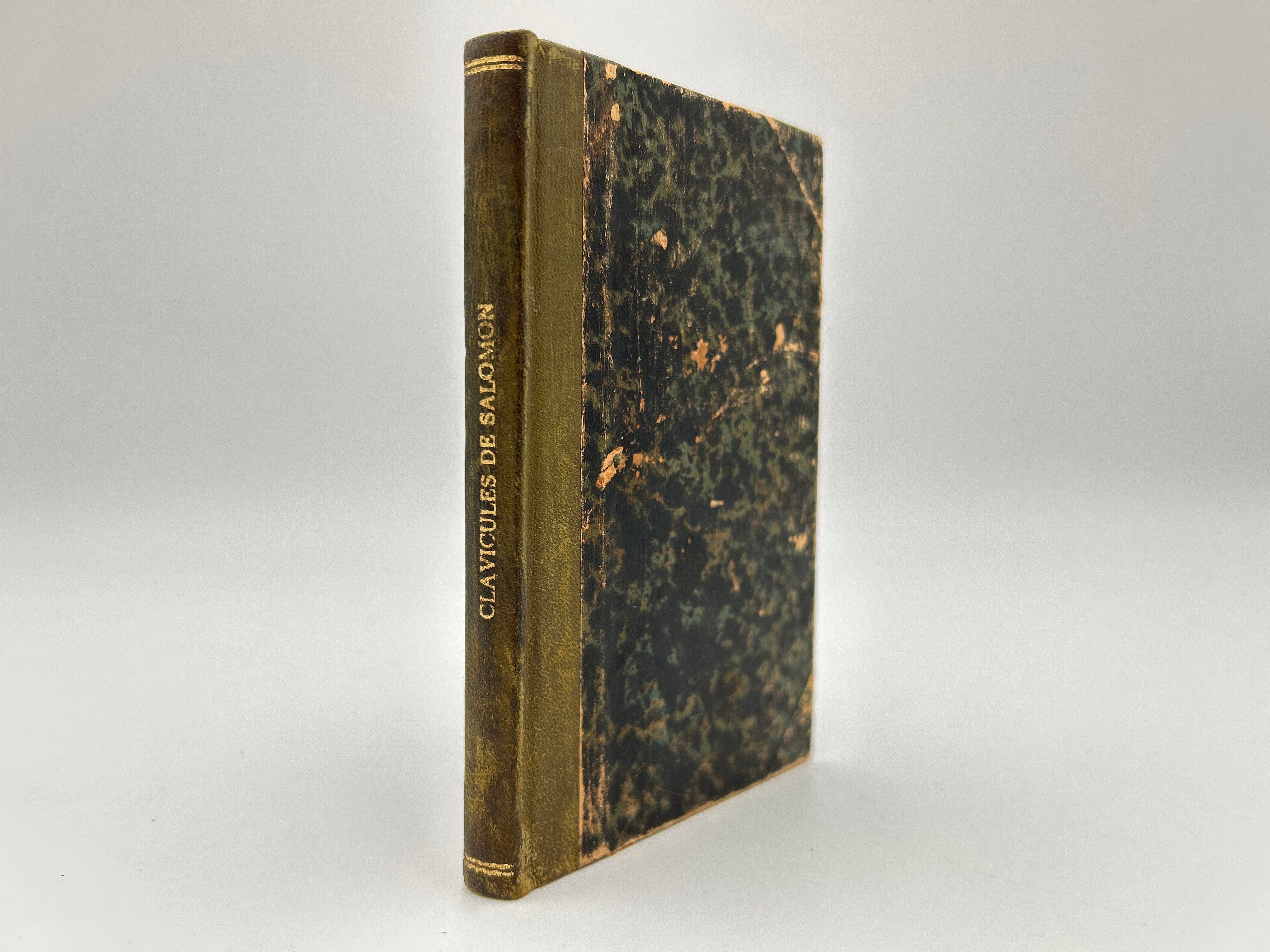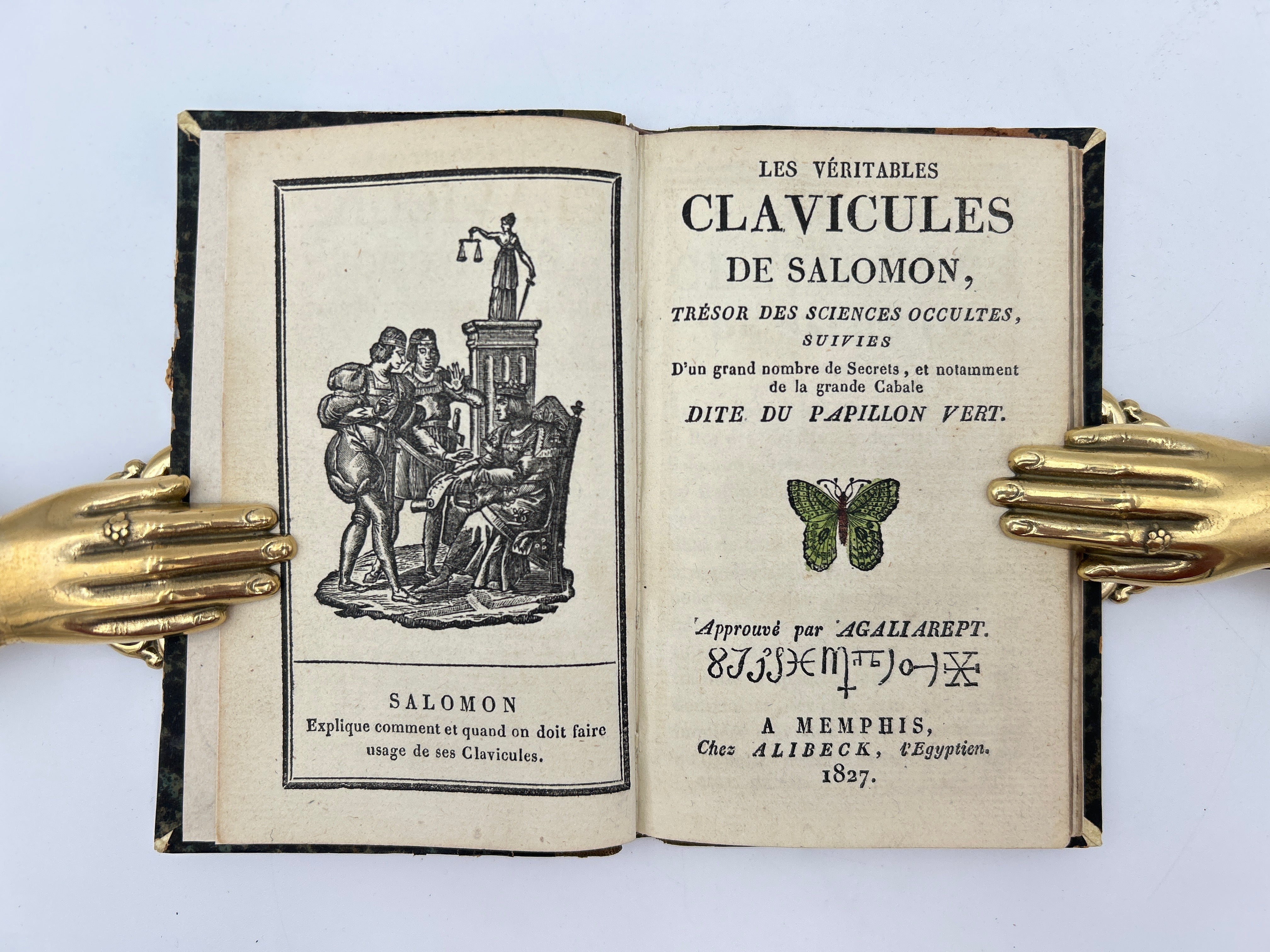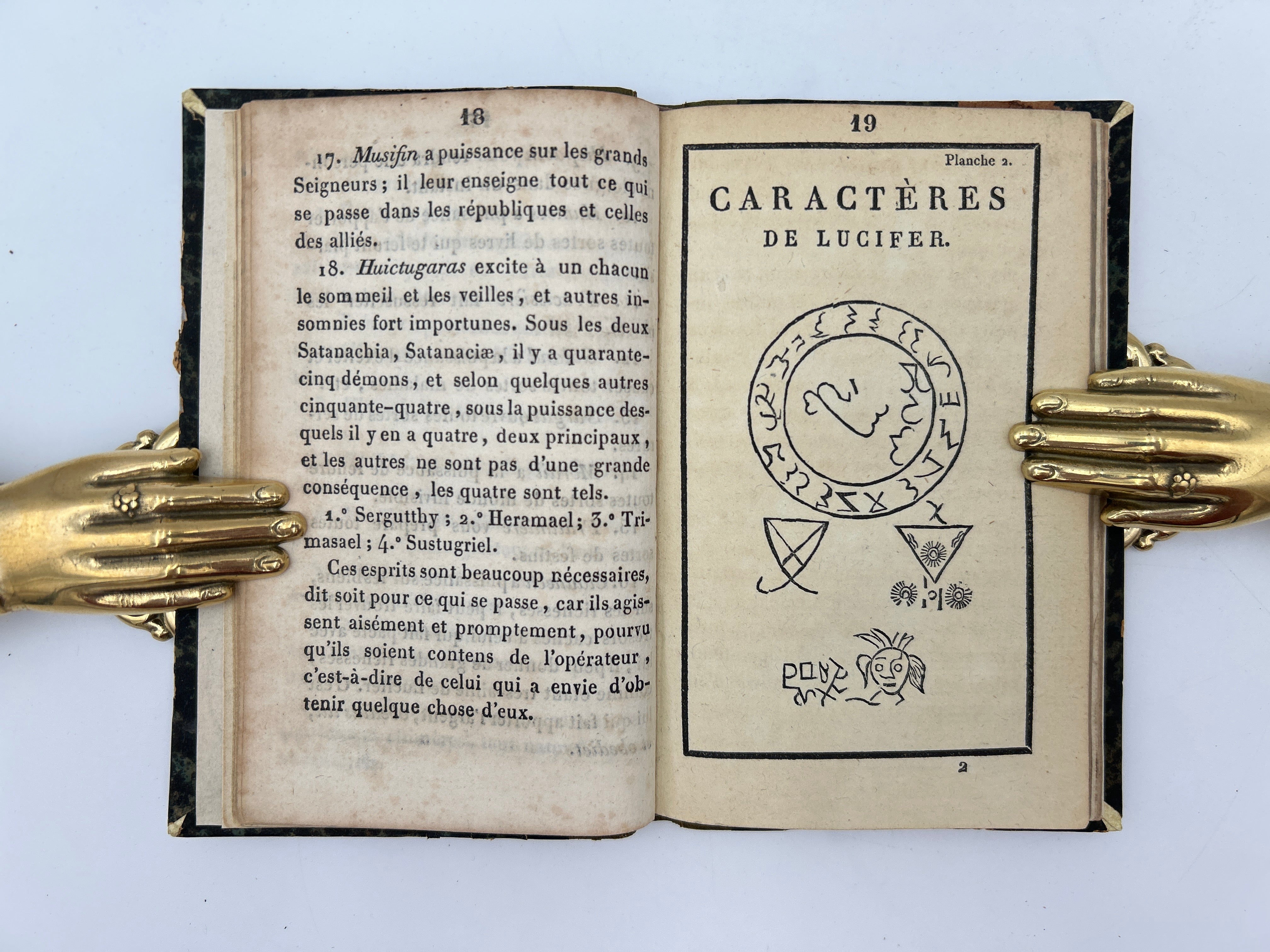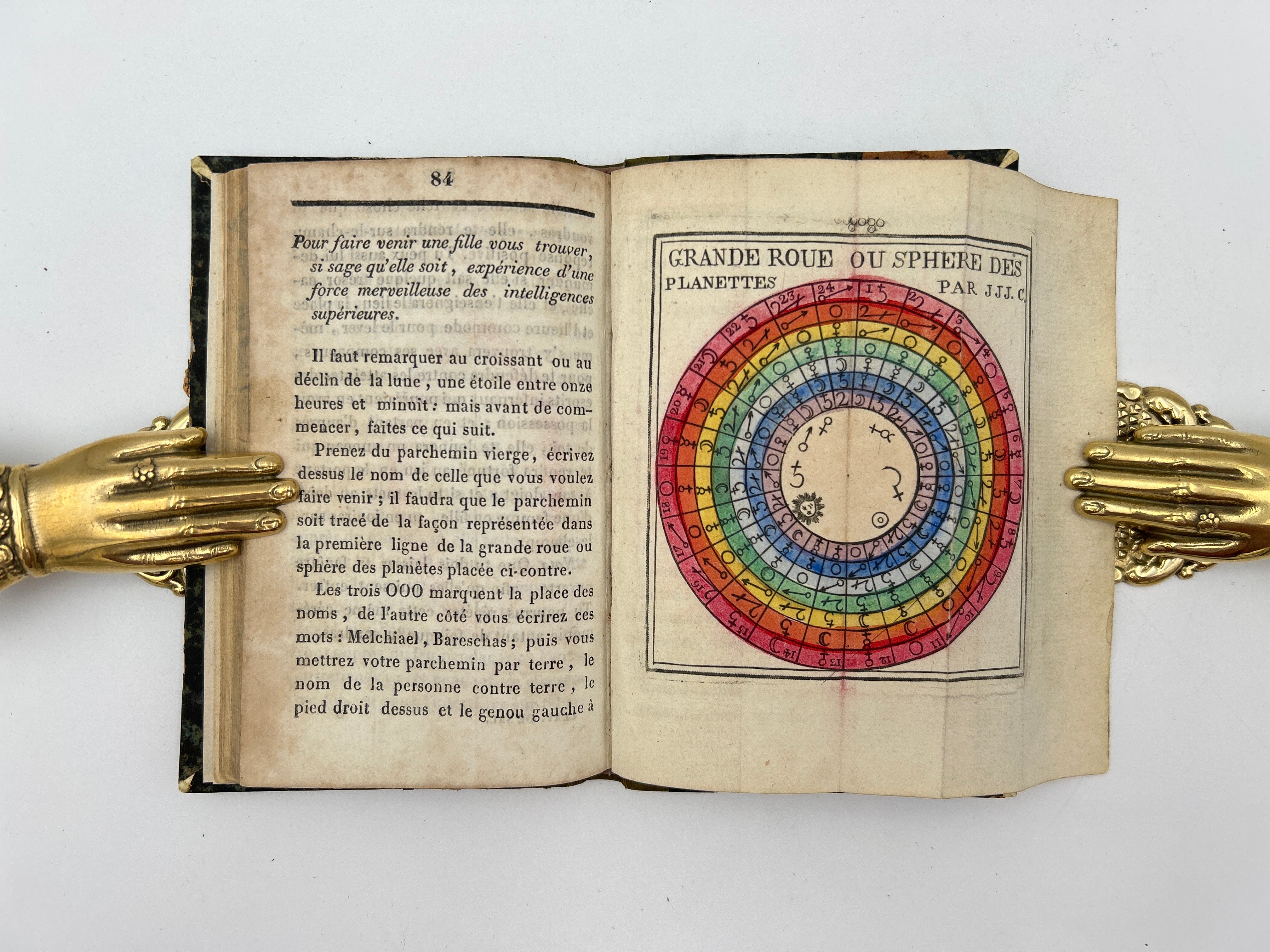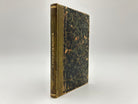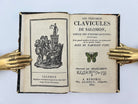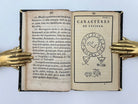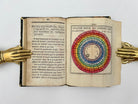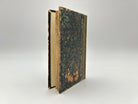Grimoire: The Real Keys of Solomon
Couldn't load pickup availability
5RR, The Real Keys of Solomon, Treasure of Occult Sciences of a Great Number of Secrets in Particular of the Great Cabal Known as the Green Butterfly, 1827 printing. In French.
Notes
Grimoires are books of magic, often containing instructions on performing spells, rituals, and invocations, as well as detailed knowledge of astrology, alchemy, and other occult practices. They have played a central role in Western esotericism and occult traditions for centuries. The term "grimoire" is often associated with a practical guide to the occult arts, and the contents of grimoires may vary widely, including magical symbols, prayers, and procedures for communicating with supernatural entities, especially spirits or angels. Historically, grimoires were used by magicians, witches, and practitioners of the occult to gain power, knowledge, or divine favor, often blending religious elements with folklore and arcane teachings.
The Real Keys of Solomon (often referred to as The True Key of Solomon) is a grimoire based on the legendary Clavicula Salomonis, or Key of Solomon, one of the most famous and influential grimoires in Western occult tradition. While the Key of Solomon itself is traditionally attributed to King Solomon, the supposed author of magical texts that unlock divine wisdom and supernatural power, the Real Keys of Solomon is a modern interpretation or re-imagining of these ancient secrets.
The Key of Solomon grimoire, believed to have been written in the Middle Ages, contains instructions for summoning and controlling spirits, angels, and demons. It focuses heavily on rituals, symbols, and protective measures, with the goal of achieving control over supernatural forces
The final chapter concerns, the capture of so-called “green butterflies”, which can purportedly reveal the future and help their captors find treasure. A best seller across early modern Europe, versions of this text were translated into Latin, Italian ,French, English, and German it was supposedly originally written in Hebrew, but the oldest surviving manuscript is Latin. Its widespread appeal, led to quick and dirty, dissemination and publication, few extant copies of the Clavicule look-alike. However its titled is often found among condemning evidence in documents for witchcraft trials.
The text includes prayers, magical symbols (sigils), and detailed steps for performing ceremonies designed to gain knowledge, power, or influence over the physical and spiritual realms. These rituals are intended for practitioners with knowledge of magical arts, emphasizing the use of divine protection and the invocation of celestial beings for assistance in achieving the practitioner’s goals.
The Real Keys of Solomon essentially serves as a continuation or modernization of this foundational grimoire, with its content exploring the ancient magical practices associated with the legendary King Solomon. The book emphasizes the same themes of invoking divine powers for specific purposes, using sacred and esoteric knowledge to control supernatural forces. It maintains the symbolic importance of Solomon’s seal, which is often a central motif in ceremonial magic and occult traditions, and it provides updated interpretations for contemporary readers interested in Solomon’s legacy in the mystical arts.
While The Real Keys of Solomon draws heavily on the original Key of Solomon text, it also adapts some of the ancient magical principles for modern practitioners, mixing traditional occult philosophy with more contemporary perspectives on magic. The work has been influential in the modern occult community and continues to be a reference point for those studying ceremonial magic, although it is also regarded with caution due to its associations with dark or potentially dangerous magical practices.
Description
Marbled boards with green leather spine. Gilt lettering on the spine. Marbled edges. Rubbing to the extremities. Some chipping along upper and lower edges as well. Many colored images throughout. Minimal browning. 19th century reprint. Fine condition overall.
